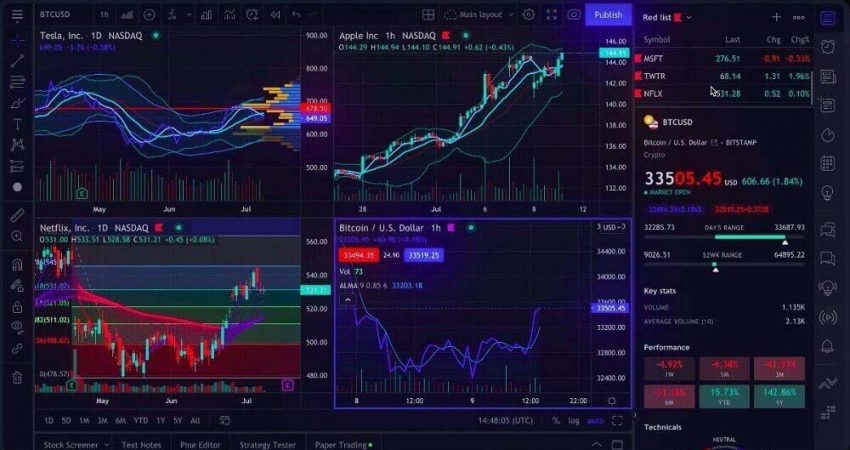The world of online trading platforms can be overwhelming and confusing, especially if you are new to the game. With so many options available, it can be difficult to determine which platform is right for you. Two of the most popular platforms on the market today are TradingView and other trading platforms.
TradingView offers a unique approach to trading with its social trading feature. It allows users to share trading ideas and analyses with other users, creating a community of traders who can learn from each other. This feature sets TradingView apart from other trading platforms and is especially beneficial for novice traders who are looking to learn from experienced traders.
Another advantage of TradingView is the ease of use of its charting tools. The interface is smooth and user-friendly, making it easy to navigate and customize charts according to your preferences. Additionally, TradingView offers a wide array of charting tools, indicators, and technical analysis tools, making it a one-stop shop for traders.
One of the downsides of TradingView is that it is not a full-service trading platform. This means that it does not offer features such as trade execution, order routing, or access to multiple asset classes. As a result, traders may need to use other platforms in conjunction with TradingView to execute their trades.
Other trading platforms, such as MetaTrader 4, offer a more comprehensive range of features for traders. These platforms provide access to multiple asset classes, including stocks, commodities, and forex, as well as features such as algorithmic trading, backtesting, and automated trading. This makes them a popular choice for experienced traders who are looking for advanced trading tools and the ability to trade across a variety of markets.
However, the downside to these platforms is that the interface can be less user-friendly and the learning curve can be steep for novice traders. Additionally, the lack of social trading features means that traders may need to seek out information and analysis from external sources, which can be time-consuming.
Ultimately, the choice between TradingView and other trading platforms depends on your specific trading needs and preferences. If you are a novice trader looking to learn from seasoned traders or need an easy-to-use charting tool, TradingView may be the right choice for you. On the other hand, if you are an experienced trader looking for more comprehensive trading tools and access to multiple asset classes, other trading platforms such as MetaTrader 4 may be the better option.
Regardless of which platform you choose, it is important to remember that trading can be risky, and it is important to have a solid understanding of the principles of trading before investing real money. Both TradingView and other trading platforms offer demo accounts that allow you to practice trading with virtual money, which is an excellent way to test trading strategies and get comfortable with any platform before risking real funds.
Another factor to consider when choosing a trading platform is cost. Some platforms may charge a flat fee per trade, while others may charge a percentage of your trade value. Additionally, some platforms may offer discounts for frequent traders or high-volume traders. It is essential to consider these fees when selecting a trading platform to ensure that you are not paying more than you need to.
